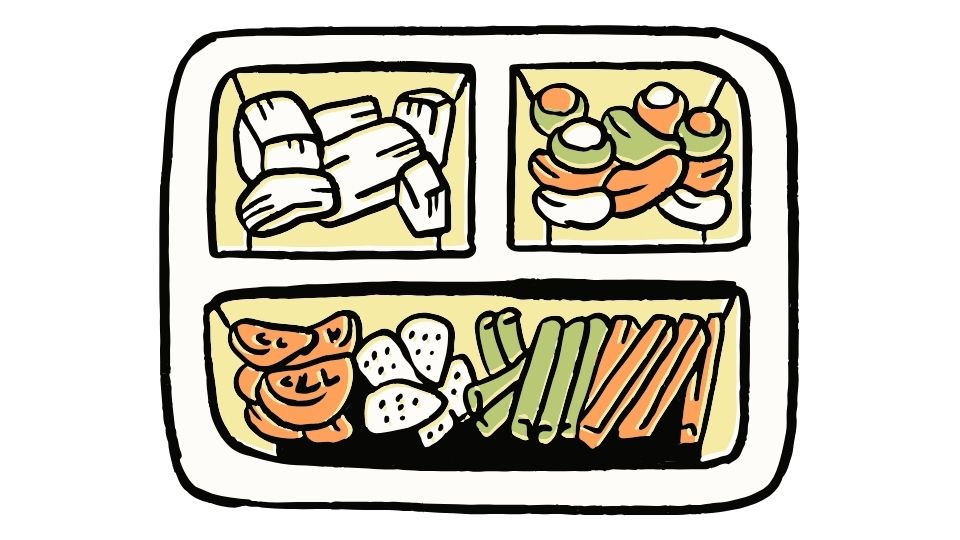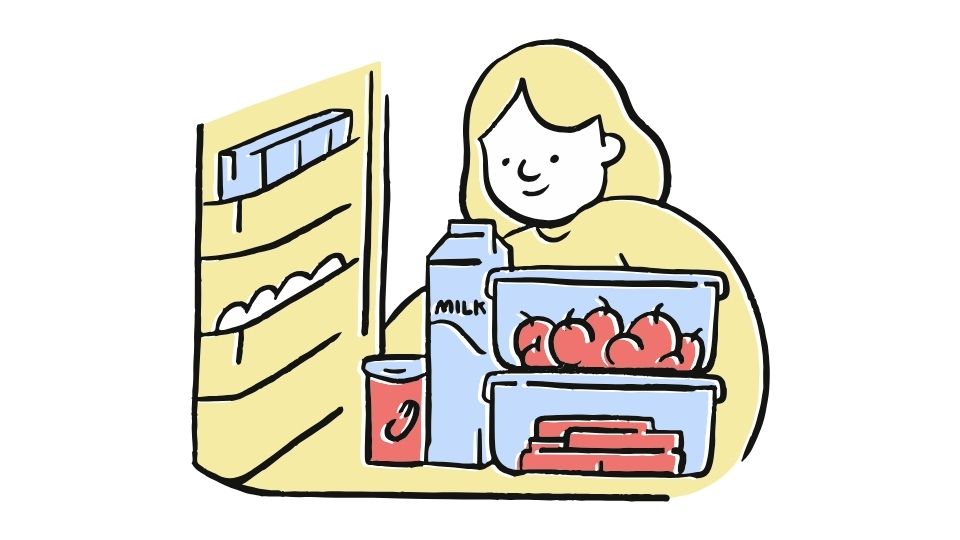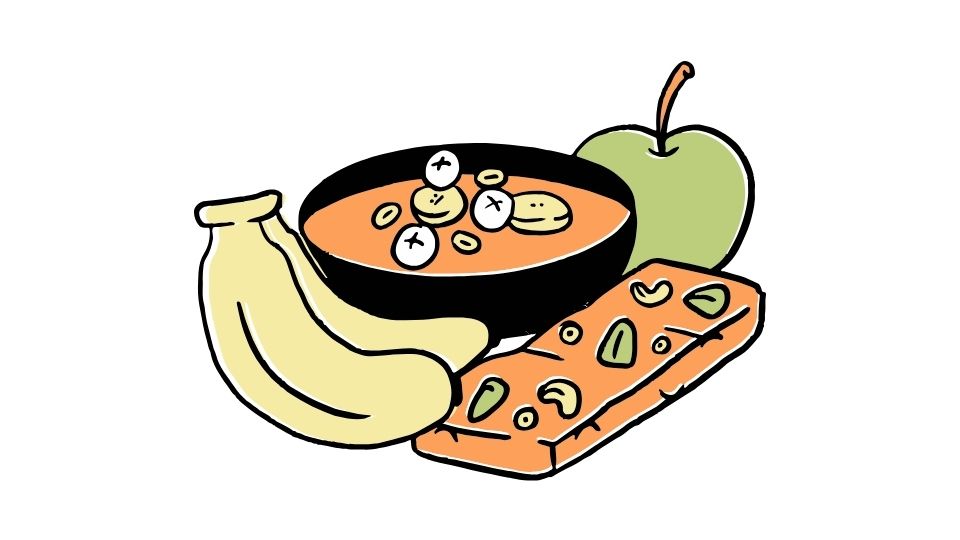Ever noticed how what you eat affects how you feel?
I sure have. One minute I’m crushing life after my protein-packed breakfast, the next I’m ready to nap at my desk after a carb-heavy lunch.
The connection between food and mood isn’t just in your head—it’s backed by science. And tracking this relationship might be the key to feeling better, more consistent energy, and fewer emotional rollercoasters.
Let’s dive into how tracking your meals can help manage those pesky mood swings—without driving yourself crazy in the process.

Food-Mood Connection: Why What You Eat Matters For How You Feel
Your brain and gut are constantly texting each other through what scientists call the gut-brain axis. It’s like they’re in a group chat that never stops.
When you eat, you’re not just feeding your body—you’re feeding your mind. Those hunger-induced mood swings (aka “hanger”) are just the tip of the iceberg.
Here’s why tracking the relationship makes so much sense:
- You’ll catch emotional eating patterns (Stress = cookies anyone?)
- You’ll identify foods that tank your mood (That 2pm sugar crash isn’t random)
- You’ll discover your personal food-mood formula (What works for Instagram influencers might not work for you)
- You’ll gain motivation through seeing real patterns, not just guessing
Research from Harvard Health confirms that what we eat directly affects brain structure and function—and ultimately, our mood.
What To Track (Without Losing Your Mind)

I’m not suggesting you need a 20-page journal entry for every snack. Keep it simple:
Food Details
- What you ate (basic description is fine)
- Rough portions (no need to weigh everything)
- Time of day
Mood Details
- How you felt before eating
- How you felt 1-2 hours after
- General energy level (1-10 scale)
- Any notable symptoms (headache, brain fog, etc.)
Context Clues
- Sleep quality the night before
- Stress level that day (1-10)
- Exercise or activity level
- Social setting (alone, with friends, etc.)
Pro tip: Use a 1-10 scale or simple emoji system for mood tracking—it makes patterns much easier to spot when you review later!
The Food-Mood All-Stars and Villains
Not all foods are created equal when it comes to your emotional wellbeing. After studying my own patterns and reviewing research on nutritional psychiatry, here are the heavy hitters:
Mood Boosters
- Omega-3 rich foods: Salmon, walnuts, flaxseeds (brain structure support)
- Complex carbs: Sweet potatoes, oats, quinoa (steady energy release)
- Protein: Eggs, chicken, beans, lentils (neurotransmitter building blocks)
- Leafy greens: Spinach, kale (folate for depression prevention)
- Fermented foods: Yogurt, kimchi, sauerkraut (gut-brain axis support)
Mood Zappers
- Refined sugar: Candy, pastries, soda (blood sugar crashes)
- Processed foods: Fast food, most packaged snacks (inflammatory response)
- Excessive caffeine: More than 400mg daily for most adults (anxiety, sleep disruption)
- Alcohol: Even moderate amounts can affect sleep quality and next-day mood
When tracking, pay special attention to these foods and how they affect you personally. Your body might have unique reactions!
Tech Tools That Make Tracking Easier
Let’s be real—few of us have time to maintain detailed food and mood journals by hand. Thankfully, technology makes this way simpler.
Several apps can help track both food and mood:
- MyFitnessPal: Has a massive food database plus notes section for mood
- Cronometer: Detailed nutrient tracking to see which vitamins/minerals affect your mood
- Daylio: Mood tracker that allows custom categories including food
- Text-based tracking: Services like MealByMeal let you text your meals and track via SMS
I personally like text-based meal tracking because it removes friction—you just send a quick text after eating rather than opening an app, searching a database, etc.
Whatever tool you choose, the key is consistency. The best tracking method is the one you’ll actually use every day.
Making Sense of Your Food-Mood Data

After tracking for 2-3 weeks, set aside 15 minutes to review your data. Here’s what to look for:
- Timing patterns: Does skipping breakfast make you irritable by 11am?
- Macronutrient effects: How do high-carb vs. high-protein meals affect your energy?
- Specific food reactions: Does dairy correlate with brain fog or do certain vegetables energize you?
- Context influences: How does eating alone vs. socially affect your enjoyment and subsequent mood?
The goal isn’t to create a perfect diet—it’s to identify your personal patterns so you can make informed choices.
According to research from the American Psychological Association, even small dietary improvements can have significant mental health benefits.
Real-Life Strategies Based on Tracking

Once you understand your patterns, you can implement targeted strategies:
- Experiencing afternoon energy crashes? Try balancing lunch with more protein and fewer refined carbs.
- Notice anxiety spikes after coffee? Consider switching to half-caf or herbal tea.
- Emotional eating triggered by work stress? Prepare mood-boosting snacks for those high-pressure moments.
My personal discovery? Eating a protein-rich breakfast with healthy fats (eggs with avocado) completely transformed my morning mood and focus.
Before tracking, I’d grab a pastry and wonder why I felt terrible by 10am.
Beyond The Basics: Next-Level Tracking
Ready to go deeper? Consider tracking these additional factors:
- Water intake: Dehydration can mimic or worsen mood issues
- Supplement use: Note if vitamins/supplements seem to affect mood
- Food timing: Are there optimal eating windows for your mood?
- Specific nutrient intake: Track B vitamins, magnesium, zinc, and omega-3s
For the data-lovers among us, comprehensive food journals combined with mood tracking can provide insights that rival expensive lab tests.
Final Thoughts: Balance Is Everything

Remember that the goal of food-mood tracking isn’t to create a perfect diet—it’s to understand yourself better.
Some days you’ll eat the salad, some days you’ll eat the cake. The value comes from knowing how each choice might affect you and making those choices consciously.
Start simple, be consistent, and adjust as you learn. Your brain and body are unique, and discovering your personal food-mood formula might be the missing piece in your wellness puzzle.
And hey—don’t let tracking itself become a source of stress! If you miss a day (or three), just pick back up. The patterns will still emerge over time.
Your turn! Have you noticed any strong connections between specific foods and your mood? I’d love to hear about your experiences in the comments.




Leave a Reply